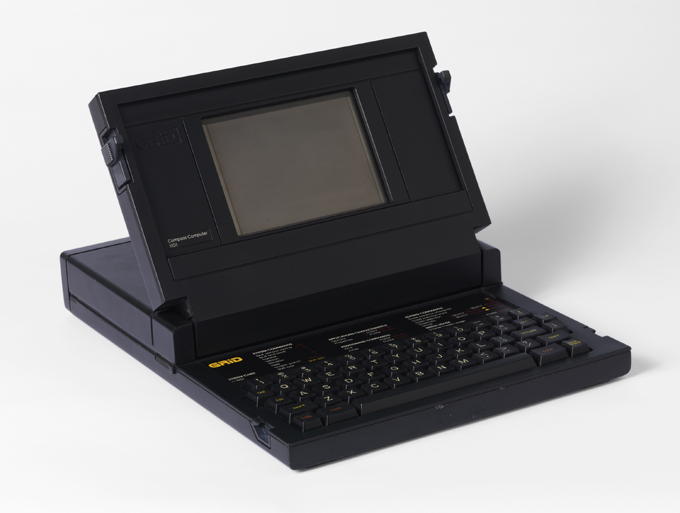Having grown up with the “space race” as a national preoccupation for so many years – which provided not only a stage for scientific exploration but also for some the twentieth century’s most notable technological developments – I find it hard to believe that the Space Shuttle just completed its 130th and final mission. As I read an article about the end of the thirty-year-old shuttle program and thought about design in the service of science, an image from one of the early missions in the 1980s came to mind. It shows an astronaut floating weightless in the shuttle cabin, next to a small black form with a keyboard and luminous orange screen. It was a GRiD (Graphical Retrieval Information Display) Compass portable computer, credited as the first laptop computer, designed by Bill Moggridge, a pioneer in the field of interaction design and current Director of Cooper-Hewitt, National Design Museum.

Astronaut John Creighton with onboard GRiD Compass computer, June 18, 1985 – Courtesy of NASA

GRiD Compass laptop computer prototype. Designed by Bill Moggridge (British, b. 1943). United States, 1981. Plastic, metal. Cooper-Hewitt, National Design Museum, Smithsonian Institution, Gift of Bill Moggridge, 2010-22-1. Photo: Matt Flynn
Bill’s original design brief was to create the GRiD’s exterior case – a minimal, flat black box, with the top hinged along its midsection – which would open to reveal the screen and keyboard. While using a prototype, Bill realized that the interaction between the user, the object (hardware), and the software behind the screen was as important as the physical form. Object and interface were, and are, essential design elements in the complete experience of using a computer. The GRiD Compass was originally intended for business users in need of a mobile and responsive computer that would allow them to work more easily while traveling. Weighing in at a little over ten pounds (lightweight for its time), powerful, with a large, readable screen for its size, and designed for ease of use, the GRiD was sought out by NASA for use on its missions. Although created for a broad audience, the GRiD’s physical and interactive design was well suited to the specialized work of space missions, and it was included on shuttle flights into the 1990s. As Cooper-Hewitt, National Design Museum prepares for the renovation of our home in the Andrew Carnegie Mansion, we look forward to the chance to show our GRiD Compass prototype as an example of innovative design in our new collections galleries, scheduled to open in 2013.